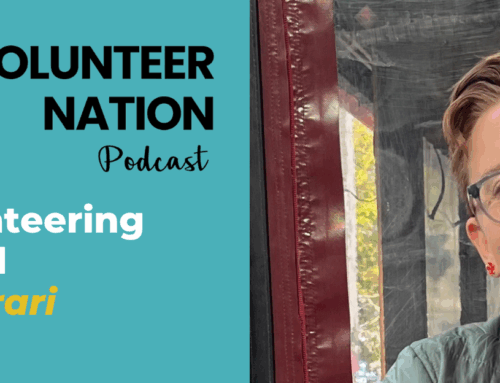 3 Steps to Building a Sustainable Nonprofit Partnership
3 Steps to Building a Sustainable Nonprofit Partnership
Building a sustainable nonprofit partnership isn’t easy. I know first hand, as I have built several over my career.
Sometimes we spend hours and hours in negotiations, only to have the potential collaborator back out at the last minute.
Or, we make it through the set-up phase only to find three months later that it’s not a good fit, and you’re back to the drawing board.
But there are also times when, as if by magic, it all comes together, your nonprofit benefits, the other organization realizes big rewards, and the cause or community wins. This is what makes all the struggle worthwhile.
But what if you could set yourself up from the beginning for a better chance at success?
Below, my friend, are three ways to do so.
Take these three steps and you’ll be more prepared than ever to seek, find, and establish a nonprofit partnership that supports greater sustainability and is fun to be part of!
Step One: Clarify Your Goals for Nonprofit Partnership
 Embarking on a collaboration takes work and sustained energy to be successful. So, having a clear picture of your big “why?” can give you a real jump-start on success.
Embarking on a collaboration takes work and sustained energy to be successful. So, having a clear picture of your big “why?” can give you a real jump-start on success.
Understanding your ultimate goals will help you clearly articulate your needs to others and help you proactively weed out prospective nonprofit partners that aren’t a good fit. This will save you time, aggravation, and your clarity of purpose will be a welcome asset during negotiations.
After all, nobody wants to waste their time and most leaders appreciate getting to the point.
Use these questions to begin to identify your organization’s goals for collaboration, which will then help you decide which prospective partners you want to approach.
- What is the problem you are trying to solve? Check your organization’s strategic plan, grant requirements, key performance objectives, mandates, chronic or reoccurring problems, and evolving needs (or emerging solutions) for clues.
- Who can help you solve it? Which organizations have both the capacity and inclination to help.
- What’s in it for them? If you can’t articulate a clear, compelling benefit for the other side, the partnership won’t last. To be sustainable, it must be a clear win for all sides.
- What is the best way to approach them? Cold calling to set a meeting can work, but it’s not the best approach. Consider who in your organization knows the partner and can make an introduction?
Also, although you may not have arrived at a final vision for the collaboration, you should understand what the final results might look like. Below are four common needs for nonprofits and some ideas on how an innovative nonprofit partnership might help them be met.
Program Needs
- Implement a special project
- Raise community awareness
- Enhance service network
- Expand geographic reach
- Access new communities
Funding-Resource Needs
- Increase funding
- Generate in-kind resources
- Increase market share
- Reduce overhead & administration costs
- Share rental space
Staff Development Opportunity
- Create a cross-training opportunity
- Increase volunteer roles & responsibilities
- Share in-service training costs
Risk Management
- Buffer against changing funding environments
- Comply with grant requirements for collaboration
- Form alliances instead of competing for funds
- Share liability or transferring risk
These are only a few of the possible functions or results for partnerships.
Before you meet with your next partner, make sure you understand which needs are most important for your organization.
Step Two: Analyze the Current Stakeholder Landscape
 Most commonly, organizations use stakeholder analysis to better understand those who are affected by their work.
Most commonly, organizations use stakeholder analysis to better understand those who are affected by their work.
They may use the process to better understand their supporters and how they might expand their relationships with those who actively support them now and those who might do so later on.
When we think of nonprofit stakeholders, though we tend to be shortsighted — we usually think first of the people we serve and then perhaps our volunteers and funders. But your stakeholder pool can be so much deeper than that.
When we expand our horizons, stakeholder analysis can also uncover new and innovative ways to partner.
What is a Stakeholder?
The dictionary defines a stakeholder as “a person or group that has an investment, share, or interest in something, as a business or industry.”
While nonprofits do not generate financial profit per se, they certainly can create added value for a community. It is this added value or the perception thereof, that converts a simple bystander to someone with an interest who might be willing to invest. Although not all stakeholders are active supporters right now, they are the most natural people to reach out to.
Who Are Your Stakeholders?
In order to develop a deeper understanding of who might make up your stakeholder posse, it helps to split them into categories.
You can create and label your groups, based on their unique relationships with your organization. These categories are helpful, but if others work better, use them instead:
1) Clients — These are the folks who receive direct service from your organization. This also includes family members and caregivers who might approach you for help. If you are not a direct service organization, your clients could be those who stand to most directly benefit from your work.
2) Funders/Authorizers — These are the entities, both public and private, that help provide the resources necessary to get the job done. They also include any entity that authorizes or mandates your existence. For example, if you are an Area Agency on Aging, the state department of aging and the federal legislature are both a funder and an authorizer of your program, because it is mandated by law.
3) Managers/Enablers — Anyone who is responsible for the management and oversight of your agency or program falls into this category. They can be paid staff or volunteers. Most people don’t recognize the program manager as a stakeholder, but do they have a vested interest in the program’s success? You bet; their job depends on it.
4) Producers/Partners — This group is comprised of both people internal to your organization, such as staff and volunteers, as well as external to it, such as community partners who are directly involved in some way with the organization’s day-to-day business.
5) Community — Finally, community stakeholders might include partner organizations with whom you have loose affiliations. They also include local community members and others who indirectly benefit from your work. For example, taxpayers may benefit from a local youth employment and training program because of increased educational attainment and, therefore, reduced teen crime rates.
What are Innovative Ways to Partner with Stakeholders?
Once you have identified your stakeholder groups, identify which kinds of subgroups make up the larger categories.
Not all stakeholders care about the same things. So, once you have these subcategories identified, consider what each group cares about. What are their specific interests and priorities? How can you more effectively engage them? What information do they need from you? Finally, who have you left out?
Once you have mapped your agency’s stakeholders, consider how each group can help further your organization’s current goals and priorities. Also, consider partners from their perspective. How can you help them achieve the results they are seeking?
Through this process, you might uncover some missed opportunities. You’ll also be better able to craft communications messages directly to the people who may care most about working with you because you’ve taken the time to explore and understand the context.
Through this added clarity, you’ll also be better able to develop key performance measures for the partnerships and focus your attention on the outcomes that make the most sense.
Finally, you’ll become more strategic in selecting potential community partners who have a stake in what you do.
Step Three: Track and Communicate Your Impact
![]() Part of the reason we become unfocused and lose steam as a partnership is that we are not clear about how our collaboration truly connects and supports our overall missions.
Part of the reason we become unfocused and lose steam as a partnership is that we are not clear about how our collaboration truly connects and supports our overall missions.
We simply haven’t connected the dots for ourselves or our teams in a meaningful way. When was the last time you developed a strategic partnership agreement that focuses, with laser-like precision, on delivering your mission?
Are your staff and volunteer job descriptions and team project plans aligned with the activities outlined in that plan? Do the policies and procedures related to the partnership support a streamlined implementation of your mutual strategy? And, are all resource and funding decisions prioritized based on that plan?
A Case Study
We often make broad assumptions about how effective certain activities are in furthering our goals.
Consider, for example, the education activities of a fictitious partnership that promotes healthy nutrition for kids. Last year, the collaborators made presentations at 145 PTA meetings in their region and reached over 670 people.
This year they doubled that activity.
Their presentation materials were stellar, the volunteer presenters were well trained, and they received enthusiastic feedback from their audiences. They might conclude, “Super! We’ve reached a significant number of people, our community support is growing, and now kids will choose healthy foods to eat!”
Mission accomplished? Maybe, maybe not. Did kids improve the way they eat? Did it happen as a result of these presentations? How would you know?
My point isn’t that we should disregard the yields of our activities (commonly called our outputs), but that we need to dig deeper and test our assumptions about what they achieve (our outcomes) and the ultimate change they make in our communities (our impact).
This isn’t a new concept, by any stretch of the imagination, but it’s striking how many organizations continue to focus on outputs and assume the outcomes are occurring naturally. We are all super busy completing our assignments, but are we really getting the job done?
The closer you are to achieving real, evidence-based impact, the better.
And, the more you and your partner understand the positive impact you are making and can explain it in clear, supportable terms to others, the more funding you will attract.
Switching from Outputs to Outcomes
You probably don’t have a lot of money to hire a research firm to study what happens to the people you help and its ultimate impact on the community.
In addition, you may already have performance measures that you are required to track by your funder, your board, or simply because that’s your legacy.
Even if this is the case, you can still choose to improve your outcomes measurement for the partnership. Consider again, the organization that promotes healthy child nutrition. Which of the following statements demonstrate that the collaboration had an impact?
- Last year, our team made 325 presentations, educating over 1,350 parents about child nutrition.
- Of the 1,350 people who attended our Healthy Kids talks last year, 90% felt that the information will help them plan healthier meals for their kids.
- 90% of the parents who attend our Healthy Kids talks report that their kids eat healthier meals as a result.
The first statement merely reports on the tasks that were done. It might help to understand the inventory of materials you need, the staffing levels to plan for, and if your event marketing is working, but it doesn’t demonstrate a mission result.
The second statement helps us understand the audience’s perceived value of the material presented and indicates their willingness to follow a specific course of action. It does not, however, track whether or not they acted on the advice given.
The third statement presents the end result versus the activity needed to make it happen or audience satisfaction. It’s clear, powerful, and compelling. It’s mission-focused and it’s something people can get around.
Take a look at the activities you currently track. Are they directly connected to mission success? Or do they represent a flurry of activity that may or may not be moving you forward?
Then, consider what you might need to track to really show why taking the trouble to collaborate makes sense and offers a true return on investment.
Make sure that the outcomes you track demonstrate a solid return on investment for those who fund it and support the partnership and you’ll have a better chance at sustainability.
To be fair, it is more of a challenge to collect the data that will support the final statement, and you can’t make things up. So, this means you and your nonprofit partner have to not only decide which outcomes to track but also must build in systems to gather information from the people you touch after the fact.
What Needs Could a Solid Nonprofit Partnership Help You Meet?
Nonprofit partnership development isn’t easy work, so it’s so often neglected.
We gravitate toward less stressful tasks that help us feel better about our work, but may not help us build a better future.
Like all procrastination, it’s usually easier in the short run, but makes things much harder over the long haul.
Consider what a fresh, innovative might do for your organization and how it can help others. Might it be worth it to reach out and start a conversation about what might be in your community?







Leave A Comment